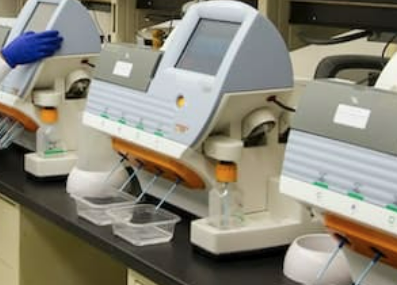
Turbine Flow meter calibration
In a turbine flow meter a rotor with a diameter almost equal to the pipe internal diameter is supported by two bearings to allow free rotation. A magnetic pickup, mounted on the pipe detects the passing of the rotor blades generating a frequency output. Each pulse represents the passage of a calibrated amount of fluid. The angular velocity (i.e. the speed of rotation) is proportional to the volumetric rate of flow. There is a minimum flow below which accuracy cannot be guaranteed due to liquid slippage. When the flow ceases, the liquid itself provides sufficient damping to stop the rotor rotating.
Advantages
•The turbine meter is easy to install and maintain. They:
•Are bi-directional
•Have fast response
•Are compact and light weights
The device is not sensitive changes in fluid density (but at very low) specific gravity's, range ability may be affected), and it can have a pulse output signal to directly operate digital meters.
Disadvantages
•They generally are not available for steam measurement (since condensate does not lubricate well.
•They are sensitive to dirt and cannot be used for highly viscous fluids or for fluids with varying.
•Flashing or slugs of vapour or gas in the liquid produce blade wear and excessive bearing friction that can result in poor performance and possible turbine damage.
•They are sensitive to the velocity profile to the presence of swirls at the inlet; therefore, they require a uniform velocity profile (i.e. straight upstream run and pipe straightness may have to be used).
•Air and gas entrained in the liquid affect turbine meters (in amounts exceeding 2% by volume: therefore, the pipe must be full).
•Strainers may be required upstream to minimise particle contamination of the bearings (unless special bearings are used), finely divided solid particles generally pass through the meter without causing damage.
•Turbine meters have moving parts that are sensitive to wear and can be damaged by over speeding. To prevent sudden hydraulic impact, the flow should increase gradually into the line.
•When installed, bypass piping may be required for maintenance. The transmission cable must be well protected to avoid the effect of electrical noise. On flanged meters, gaskets must not protrude into the flow stream.




